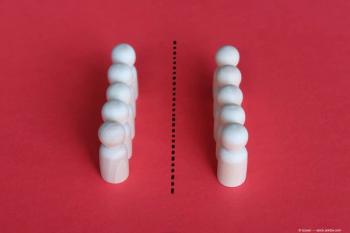
New IOL design gives premium results from non-premium lens
The latest iteration of a certain IOL family (enVista, Bausch + Lomb) is receiving positive feedback from early surgical users.
For starters, the MX60E opens in about 20 seconds compared with 2.5 minutes for previous versions as well as superior intermediate vision results.
"Of my first 45 patients, 97.7% were 20/30 uncorrected intermediate and 62% were 20/25," said Dee Stephenson, MD, the first surgeon to use the enVista MX60E.
"Thirty-five percent were 20/20 and 100% were 20/40 or better," said Dr. Stephenson, of Stephenson Eye Associates, Venice, FL. "This was in all takers, no astigmatism correction, just a monofocal IOL.
"It's not a premium lens, but you could almost use it as a premium lens because it gives you such great intermediate vision," she said. "Eighty-six percent of all of my patients can read their hand-held devices without glasses."
Dr. Stephenson reported more detailed results on a large cohort of patients at the 2018 meeting of the American Society for Cataract and Refractive Surgery.
The newest EnVista is glistening-free, Dr. Stephenson continued, and is highly resistant to scratches created while the lens in is being loaded in the injector or during insertion into the eye.
"When you see those forceps marks or scratches after the lens unfolds, you know they aren't going away," she said. "They can be visually impairing and you can't do anything short of replacing the lens. This lens just doesn't seem to scratch."
The MX60E is the latest member of the enVista IOL family to be approved for use in the United States and to reach the market. A similar toric lens has been approved for use in the European Union. Bausch + Lomb is looking to include a toric offering on the same platform in the United States in the near future.
Advantages like a scratch-resistant surface and faster opening time didn't happen by accident. Bausch + Lomb has been modifying the enVista platform based on surgeon feedback, according to the company.
"Surgeons had three key things they wanted to have addressed by the next generation of monofocal IOLs," explained Chuck Hess, vice president and general manager, U.S. Surgical, for Bausch + Lomb.
"They wanted lens technology that provided better performance from a centration and stabilization perspective," Hess said. "They wanted an optic that was free of glistenings and scratches. And they wanted a lens that went into the eye and opened rapidly to allow them to improve efficiency. The next generation MX60E addresses all three of these shortfalls in current monofocal IOL technologies."
Design tweaks in the MX60E provide better centration and stabilization than other IOLs, Dr. Stephenson noted.
The new haptics are angulated at 56° to provide total coverage of 112°. The enVista provides the broadest capsular contact angle of the three IOL platforms available in the U.S. market, Hess noted. The broader contact surface increases stability within the capsule both during and after healing.
"That 110° is more than half the bag, which makes this lens amazingly stable in the eye," Dr. Stephenson said.
"Even if you have a zonular weakness or a bag that isn't perfectly centered, this lens will center very nicely, almost like it has its own CTR built into the platform," she said. "The Tecnis haptics only cover 84° total and the Acrysof 88°. With 110°, the enVista centers very nicely almost on its own."
The EnVista also has a 360° square edge versus the rounded edge used by other manufacturers. The square edge does a better job preventing lens epithelial cell migration compared to other designs, Dr. Stephenson explained.
The lens is aspheric and does not introduce any negative or positive dysphotopsia and the power is the same from center to edge, which provides a comfortable margin of error if the lens is less than perfectly centered.
The hydrophobic acrylic material that forms the enVista platform is 16 times harder than comparable lenses, Hess said.
Designers tweaked the molecular structure of the acrylic used to eliminate the tiny voids that create glistenings as the lens material absorbs moisture.
The rapid opening speed has nothing to do with visual results and everything to do with surgical efficiency. Earlier enVista lenses took about 2.5 minutes to fully open. Surgeons could reduce the opening time by warming the viscoelastic used during the insertion process, but it was still a long wait for the newly inserted lens to unroll after it had been inserted.
"We no longer have to warm the viscoelastic to speed opening and the MX60E still opens faster than any other acrylic IOL else on the market," Dr. Stephenson said. "That can be a real time savings for the surgeon."
Visual results with the new lens are outstanding, she continued.
In addition to the surprisingly strong intermediate results, she is seeing very good close results, with about 66% of eyes at Jaeger 5.
"I have several patients who are 20/20 J1 near vision and 20/20 intermediate," Dr. Stephenson said. "I have some patients doing as well as with premium lenses, if not better.
"The quality of vision is great, no halos or glare, no induced dysphotopsia," she added. "This is my go-to lens for any post-refractive patient who doesn't have astigmatism."
Disclosures:
Dee Stephenson, MD
p: 941/485-1121
e:
Dr. Stephenson did not initiate a financial interest relevant to the subject matter.
Newsletter
Don’t miss out—get Ophthalmology Times updates on the latest clinical advancements and expert interviews, straight to your inbox.





